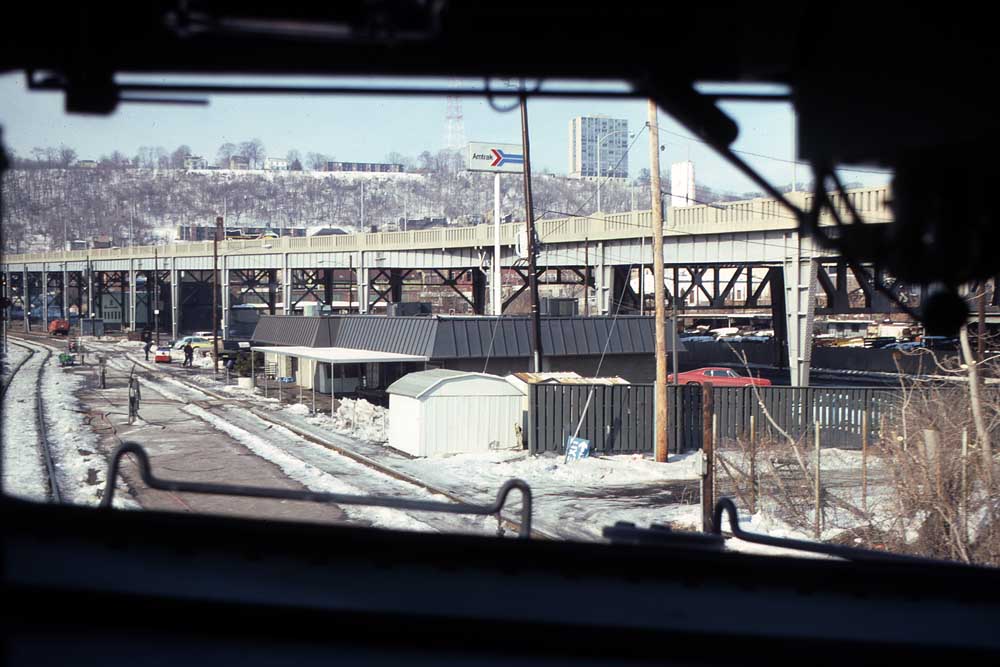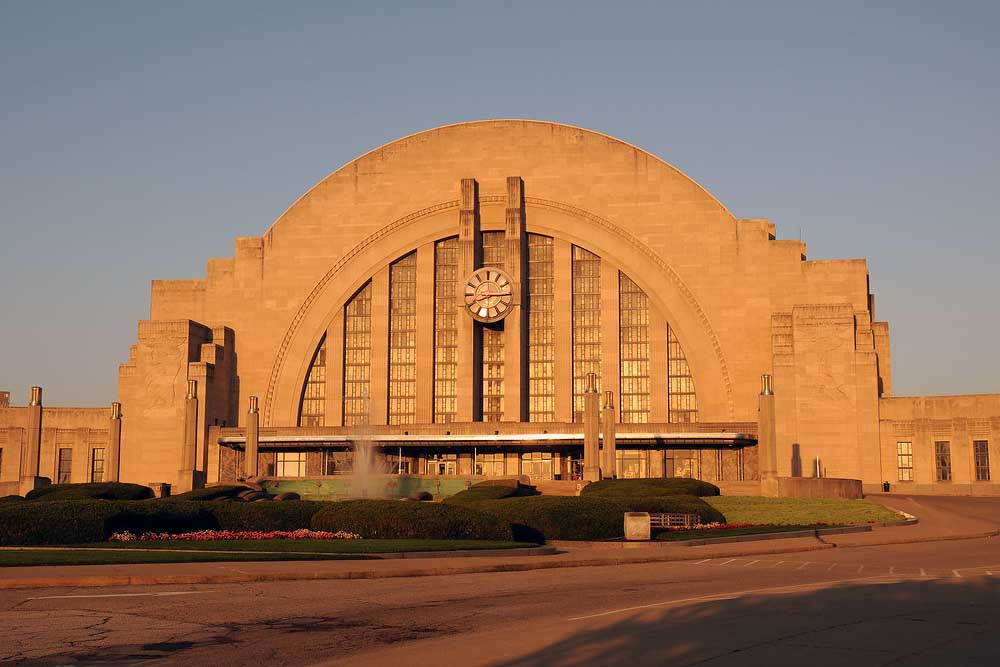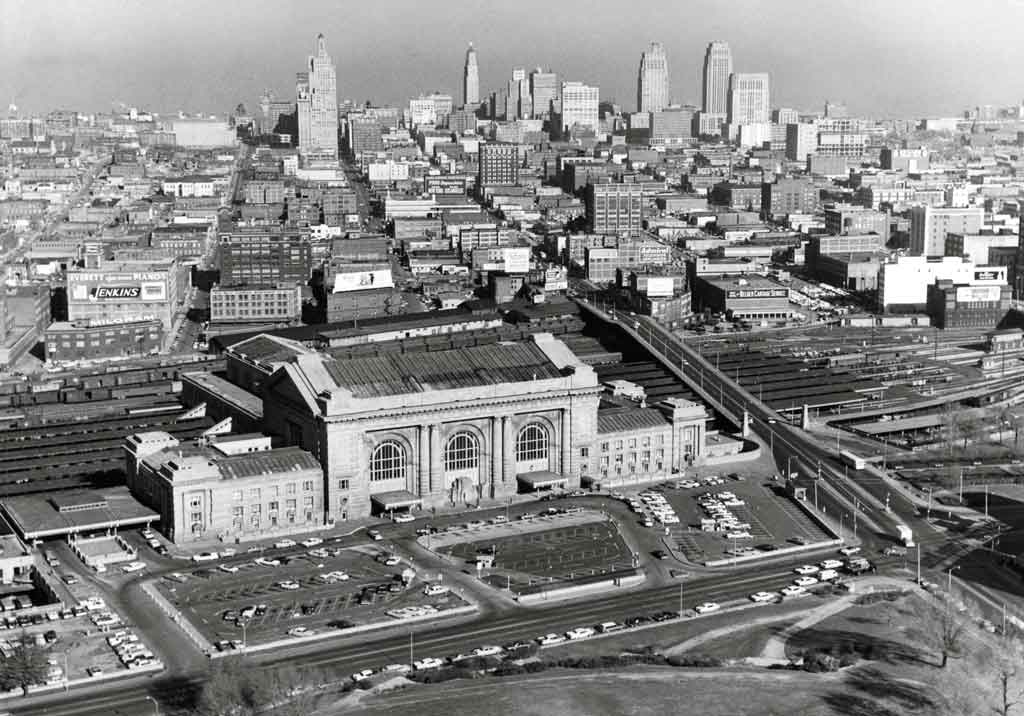Amtrak Cincinnati services arose from the need to move people between the Mid-Atlantic and Midwest. Amtrak moved from Cincinnati Union Terminal to a new station, its first new-built station on its vast network, located on River Road west of downtown on Oct. 29, 1972.

On July 29, 1991, Amtrak returned to the monolithic Cincinnati Union Terminal. It is located at 1301 Western Ave. The iconic terminal underwent extensive renovations, transforming it into the Cincinnati Museum Center between 1986 and 1990.
James Whitcomb Riley and Cardinal
Upon Amtrak’s creation, it ran the James Whitcomb Riley, named for the Indiana poet, from Chicago to Cincinnati via Indianapolis. The name was inherited from the Penn Central service on the same route. At Cincinnati, it connected with theGeorge Washington, a former Cheaspeake & Ohio service, which had sections serving both Washington, D.C., and Newport News, Va. Amtrak combined the trains in July 1971 with the Riley name used for the westbound run and the Washington name used for the eastbound run.
In May 1974 it became the Riley in both directions and began to bypass Indianapolis in favor of the Chesapeake & Ohio via Richmond and Muncie. This was on account of deteriorating track on Penn Central on the train’s traditional route. It would return in April 1986, by then known as the Cardinal, with a new routing west of Indianapolis via Conrail and CSX, taking a new connection at Crawfordsville, Ind. By this time it was extended to New York City to the east and began tri-weekly operation using Nos. 50-51. The Cardinal disappeared on Oct. 1, 1981, but reappeared just months later on Jan. 8, 1982.
In the late 1990s and early 2000s the Cardinal was equipped with bilevel Superliner equipment and cut back to Washington, D.C. It later reverted to single-level Amfleet and Viewliner cars in 2003 and was extended back to New York City.

Mountaineer/Hilltopper and Shenandoah
Amtrak started a new train in March 1975 between Norfolk, Va., and Ashland, Ky., called the Mountaineer. It operated over the Norfolk & Western between those points serving Williamson and Bluefield, W.Va., and Roanoke and Lynchburg, Va. At Ashland, passengers could connect with the James Whitcomb Riley for Cincinnati and points beyond. In May 1977 the train was redirected at Richmond north to Washington, D.C., and renamed the Hilltopper. It made its last runs on Sept. 30, 1979.
Amtrak added the Cincinnati to Washington, D.C., Shenandoah in October 1976 as an indirect successor to the Parkersburg W.Va., to Washington Potomac Special. It operated over the Baltimore & Ohio main line via Cumberland, Md., and Grafton, W.Va. Of note, it operated with Amfleet equipment, including coaches that had two roomettes added in place of some coach seats. It made its last runs on Sept. 30, 1981.














I had occasion to use the Superliner-equipped Cardinal a number of times in
the early 1990’s and found it to be a very good operation. Connections off
the Northeast Corridor were good – you could take a Metroliner, or what we
now call a “regional” – and the newly renovated Washington Union Station was
a very attractive spot for a layover. The Cardinal of that era usually ran with
four cars: a sleeper, a Sightseer lounge car and two coaches (one of which
had a baggage compartment). The Sightseer was, of course, ideal for traversing
the New River Gorge and the crew set up the lower level as a sort of diner with sit-down seating for 8 or 10 people which was done by reservation. I remember
the whole thing worked very well. While I understand the value of the
northeastern cities the single level Cardinal now services, the vest-pocket
Superliner which went only between D.C. and Chicago was a pleasure to ride
and was a perfect-match for the scenery along the route.
This was nice to read, but you failed to mention the terrible times Cincinnati passengers are subject to (all in the middle of the night). I live fairly close to Cincinnati, but will never consider using these trains due to the thought of waiting on the platform in the middle of the night.
So glad to hear that Amtrak has moved back to CUT and away from the station (and I use that word loosely) on River Road. That “station” was no more than a tin roofed garden shed located with near zero useful access, under a highway overpass.